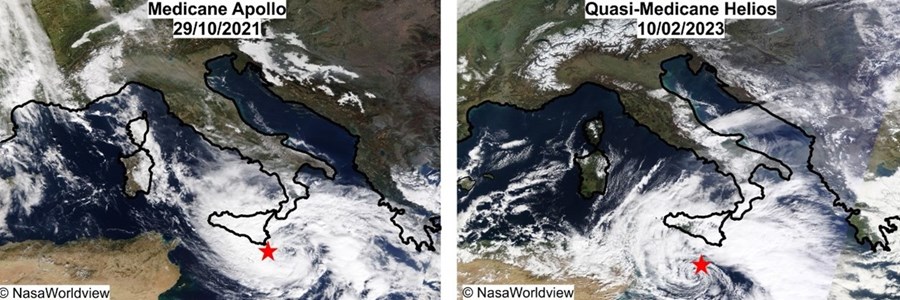
Seismology helps us understand when and how a storm breaks out at sea. This assumption is discussed in a multidisciplinary study entitled “Long-term analysis of microseism during extreme weather events. Medicanes and common storms in the Mediterranean Sea”, recently published in the ‘Science of the Total Environment’ journal. The study was funded by the NOP Research and Innovation 2014-2020, under Action IV.5 – PhD programmes on green topics, under the Archimede project (Prin Call 2022 PNRR) and under the i- waveNET project (Interreg Italy-Malta, Call 2/2019, priority axe 3). The study was conducted by a team of multidisciplinary research including, among others, the Department of Biological, Geological and Environmental Sciences of the University of Catania, the Etna Observatory of the National Institute of Geophysics and Volcanology (INGV), the Royal Observatory of Belgium, the Department of Engineering of the University of Palermo, the Department of Geoscience of the University of Malta.
Between November 2011 and February 2023, at least nine Medicanes (Mediterranean cyclones) and several common seasonal storms hit the Mediterranean Sea and various bordering countries. Researchers explained that “sea waves are able to transfer solid energy to the Earth as mild seismic waves that are recorded by common seismic stations. The seismic signals produced by the impact of waves on the coast or by pressure fluctuations, known as ‘microseism’, constitute an omnipresent signal on Earth, characterized by extremely low amplitudes.” “The analysis and integration of signals recorded by 104 stations installed in Italian, Maltese, Greek and French coastal areas, sea wave height data acquired from wave buoys and data on the state of the sea from hindcast maps (obtained from numerical modelling and validated by observations) shows that microseism contains valuable information for monitoring the temporal and spatial development of extreme meteorological-marine phenomenon,” explained Andrea Cannata, Professor at the University of Catania.” During the days of progressive intensification of the analysed events, the seismic stations installed in the areas affected by the meteorological phenomena showed a gradual increase in the energy content of the seismic waves. Furthermore, using two different localization methods based on seismic signals, it was possible to locate and follow the movement of Medicanes.”
The analyses conducted made it possible to obtain the “seismic signature” and the “seismic magnitude” of Medicanes and common seasonal storms. “Medicanes show a frequency content ranging from 0.18 Hz to 0.35 Hz, while common storms are characterized by higher frequencies (0.3 Hz to 0.7 Hz),” said Alfio Marco Borzì, researcher at the University of Catania. “Even the different values of “seismic magnitude”, which vary according to the spatial extension of the sea affected by waves with heights greater than three metres, obtained for the two types of meteorological phenomena, allow for the distinction. Since seismometers were among the first geophysical instruments to be installed and since we are now able to seismically distinguish Medicanes and common storms, the study of microseism could help reconstruct any changes in the intensity and/or frequency of these phenomena, caused by global warming”, concluded Borzì.

